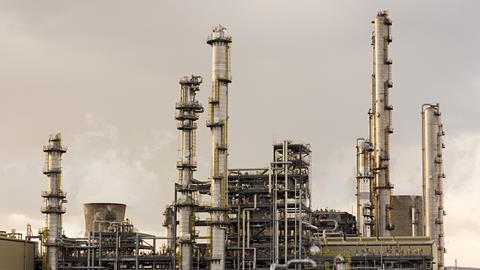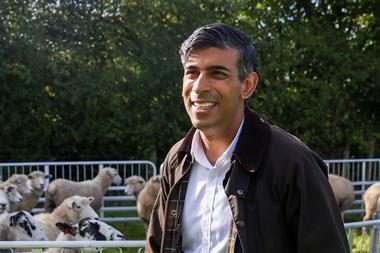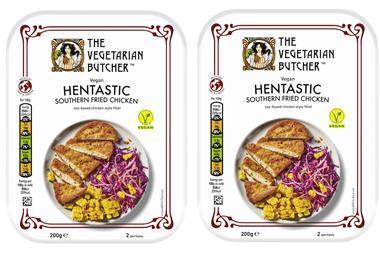Where now for commodity prices?
Dairy
After record farmgate prices in 2022 caused by soaring production costs, strong demand and tight supply, this year’s outlook points to slightly calmer waters.
This will be driven by a downturn in global demand driven predominantly by China, coupled with a modest increase in global production of around 1%, according to Rabobank.
“How strong of a downturn will be dependent on the extent of the reopening of the Chinese economy and the northern hemisphere flush,” says Patty Clayton, AHDB’s lead dairy analyst.
But market sentiment means forward futures prices are already tracking in the region of 35p per litre, according to dairy specialists Kite Consulting, despite the cost of production remaining high.
Meat & poultry
Last year’s high meat retail prices look set to continue on the back of continued input price inflation, says Justin Sherrard. Rabobank’s global strategist for animal protein.
“We’re going to see this tension with retailers [wanting] to push down on prices, but [due to ongoing input cost inflation] we’re going to see prices remain elevated.”
On poultry, Rabobank is predicting an uptick in European production of 1.5% won’t be enough to keep up with demand. In pork, meanwhile, production in Europe is expected to fall by about 3%, keeping supply tight in the UK in particular. Meanwhile, for beef, production is expected to fall by about 0.5%, adding to a near 3% decline in the size of the European cattle herd last year.
Packaging
Rising energy prices added further pressure to packaging producers throughout 2022. But Mintec data shows those pressures are set to ease in line with declining electricity and gas costs, as well as slower consumer demand. Cardboard will see a particular decline, with the price for French Kraftliner 175g in November already down by 2.4% month on month.
Meanwhile, energy-intensive glass has experienced even steeper price rises due to higher demand as industries turn away from plastic. For olive oil producer Filippo Berio, the price of glass packaging has doubled since 2021, CEO Walter Zanre says, a trend worsened by Ukrainian glass production halting. Since last September alone, costs are up 25%, Zanre says. “There simply isn’t the supply.”
Vegetable oils
Vegetable oil prices declined through H2 2022 from the elevated levels reached in H1. This is largely because supply and demand are finally finding equilibrium after the Ukraine war caused major disruption, says Mintec. While sunflower oil supply from Ukraine and Russia is still considerably lower than pre-conflict, the continuation of the ‘grain corridor deal’ agreed between the two parties has allowed increased exports of sunflower oil and rapeseed oil from the Black Sea region in recent months. This year, sunflower oil production is set to rise by almost 5% year on year in the EU, Mintec say.
Palm oil and soybean oil prices too have declined due to lower-priced rival oils, though palm oil is “one to watch” this year as demand from China is set to increase.
Energy
Individuals and businesses alike will find some comfort in knowing overall energy prices will fall this year after reaching record highs in mid-2022, when several countries cut or reduced Russian gas supply in response to its invasion of Ukraine. Despite the decline in Russian gas supplies into Europe, a reduction in global demand has forced prices down. In November alone, the European natural gas price declined by 36% month on month to €114/MWh, according to Mintec.
Similarly, global recession fears are affecting oil demand expectations despite the EU’s latest batch of sanctions on Russian oil. The unwinding of the natural gas and crude oil markets is set to reduce inflation margin pressure on energy-intensive industries.
Olive oil
Adverse weather conditions in 2022 drove down Spanish olive oil supplies by as much as 50% this year, says Mintec, while production in Italy is also down significantly.
The long-lasting drought is expected to have negative impacts on the olive size and oil quality, says analyst Roxanne Nikoro.
While production has risen in Greece, this will not be enough to cover the losses, says Filippo Berio UK CEO Walter Zanre, who is warning the shortfall has already pushed wholesale prices to record levels of more than 45% since last June, leading to steep price rises in the mults this month, and more to come later this year.
“Production is about two to three months short of normal consumption levels so prices are going to go up further,” he adds.
Wheat
Before its invasion, Ukraine typically supplied 10% of the world’s wheat. With its agricultural and export operations disrupted, the country’s wheat area is expected to contract by 30% versus 2021/22, Rabobank data shows. This has forced countries to prioritise domestic supply and look for import alternatives. However, dry weather conditions in the EU, US and Argentina are dimming hopes of any bumper crops.
“We don’t expect wheat prices to rise as much [as 2022] again, but there’s a lot of risk when all the world’s wheat reserves and hopes are laying in the Black Sea. An errant missile or other major geopolitical factor could cause weak prices to rise significantly in case of insufficient supplies,” says Rabobank analyst Michael Magdovitz.
Corn
Corn, a primary feed ingredient for animal protein, faced an array of challenges in 2022, from higher post-Covid demand, to lower supply due to Russia’s Black Sea blockade, and costly production. That, paired with a poorer harvest season in the Americas, sent corn prices shooting.
But according to Rabobank, this commodity is about to see its “first significant pullback” in terms of global demand in the past 10 years. It estimates a 3% decline in overall corn demand in 2023. This is largely because consumers are eating more affordable proteins in the face of higher food prices, and “moving down from beef, to pork, to chicken or fish, or just having a smaller plate altogether”. Less demand for feed-intense animals will see corn’s high prices of 2022 plunge this year.
Soy
Last year was mixed for soy as dry weather in South America shrunk harvests in Brazil, Argentina and Paraguay, which alongside overall inflation pressures pushed prices up. But as La Niña’s impact starts fading in Brazil, production is expected to improve and stock levels to grow. China’s return to normality will boost demand, but higher supply levels will still keep prices lower regardless.
“If you look at the soybean future prices, they’re heavily backward-dated” according to Rabobank’s analyst Michael Magdovitz, which means soy’s spot price today looks “very high” relative to the prices trading in the futures market. The bank anticipates soybean’s “dramatic arc may have reached its climax in 2022”.
Coffee
Before the pandemic, coffee demand was growing at about 3% a year, says Magdovitz. “Our outlook now is half of that, at best.”
Coffee suffered during Covid as big importers like China essentially shut off, which had a “real impact” on prices. As global economies contracted and consumers tightened their belts, coffee was seen as a “luxury good” and consumption dropped.
Rabobank expects to see small demand growth for coffee of 1.5% this year, below historical averages of 2.3%. Growth will depend on how severe any recession is, and whether natural gas will be rationed in the EU. Slower growth and increased supply from Brazil due to good weather should eventually bring stock prices down.
Commodities outlook: will food prices finally ease in 2023?

Global warming, the war in Ukraine, and China’s slowdown are some of the crucial factors affecting food commodities in 2023
- 1
 Currently
reading
Currently
reading
In graphs: Key commodity pricing data to 2023























No comments yet